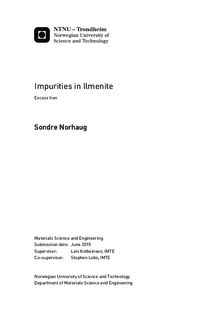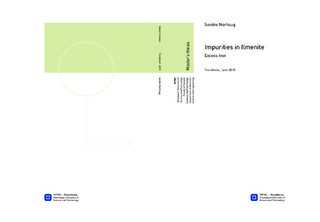| dc.description.abstract | During this master s thesis, batches of ilmenite with three different Fe/Ti-ratios were successfully synthesised. After synthesis, the batches underwent pre-oxidation, reduction with ThermoGravimetric Analysis (TGA), before subjected to an X-Ray Diffractometer (XRD) analysis and an Electron Probe MicroAnalysis (EPMA). These analyses produced degree of conversion graphs, XRD patterns, Backscattered Electron Images (BEI) and x-ray mapping of the elements. Two different gas compositions were used during reduction. These were 50% CO + 50% H2 and 100% H2. H2 proved to enhance the reduction rate of ilmenite. Excess iron inhibits the rate of reduction and degree of conversion, however, only up to a certain Fe/Ti-ratio. Higher Fe/Ti-ratios will enhance the rate and conversion until they are equal to the rate and conversion of the reference ilmenite (Fe/Ti = 1.00). This occurs somewhere between Fe/Ti = 1.12 and 1.24. | |

